
Favorite harem Austrian artist-Orientalist Ernst Rudolph preferred to write scenes with oriental flavor. Despite the thirst for impressions and interest in the East, his craving for Moroccan and Persian plots was manifested only at the age of thirty. Until then, Rudolf Ernst lived in Rome, and then in Paris, where he calmly wrote the usual canvases for Europeans. Around 1885, Ernst devoted himself entirely to the Middle East, displaying scenes from the life of the Persian sultans, the life of African pilgrims, architectural ensembles and a hot landscape.
The canvas “Favorite harem” was written by Ernst under the influence of eastern travels. The author knew the life of the harem practically from the inside, making numerous “forays” to Constantinople, Egypt and Turkey. Complicated ornaments on the walls and carpet, on which the main characters are located, testify to his observation and writing from the original, we will return to them a little later. Check out the many intricate arabesques on ceramic mosaics and wall paintings. In some places, the Persian palmette and a complex ornate pattern accurately conveyed by the artist “see through”.
The abundance of burgundy and carmine-red colors is added to the “favorite” peppered flavor. The darkened space inspires the viewer with the intimacy to which the characters are betrayed. There are a lot of half-light and deep shadows here, although it is clear that the sun breaks through the stained-glass windows of the windows with multi-colored stripes. East harem. What did the author know about him? Some harems consisted of several hundred wives and concubines. Ernst did not seek to display the excesses or lust of the owner.
On the contrary, the gentleman performed by the author is gentle and sensitive, along with his severe features and sheer fatigue. How the body of the husband is tilted and how flimsy the gestures of his mistress is, one can judge the characters sincere conversation. The oppressive silence and coolness makes the imagination draw a completely modest dialogue of people with a half-whisper.
The entire canvas is dotted with the “semi” prefixes: twilight, half-shade, noon, half talk and so on. Ernst endowed the heroes with a perfect family idyll, as if there were no huge clusters of females of different ages in the palace. Perhaps this is the only one that gives advice to his master, gives selfless love, without demanding in return fame and encouragement?
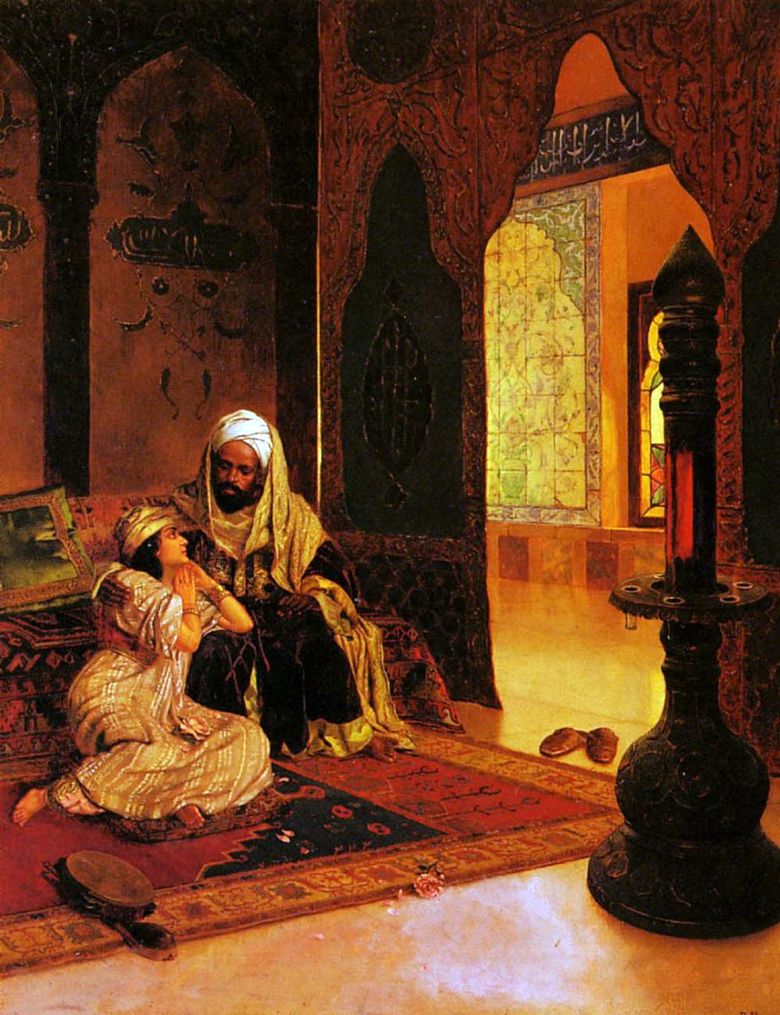 Le favori du harem – Rudolph Ernst Peierls
Le favori du harem – Rudolph Ernst Peierls Harem favorito – Rudolph Ernst Peierls
Harem favorito – Rudolph Ernst Peierls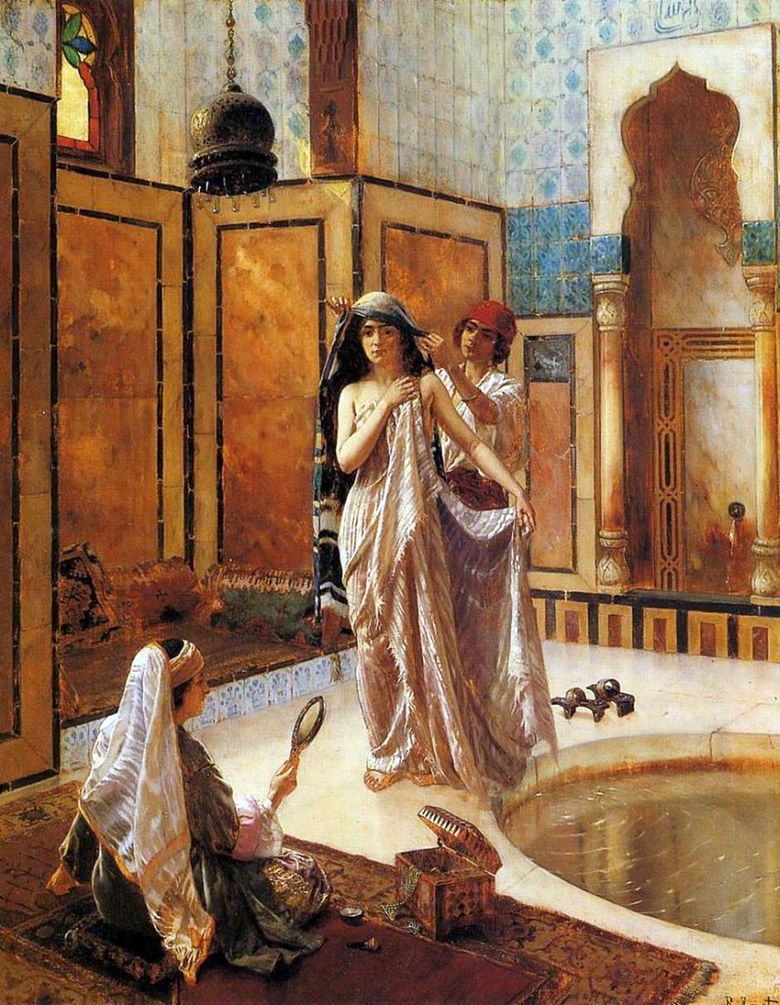 Bain de harem – Rudolph Ernst Peierls
Bain de harem – Rudolph Ernst Peierls Bath in the harem by Rudolf Ernst Peierls
Bath in the harem by Rudolf Ernst Peierls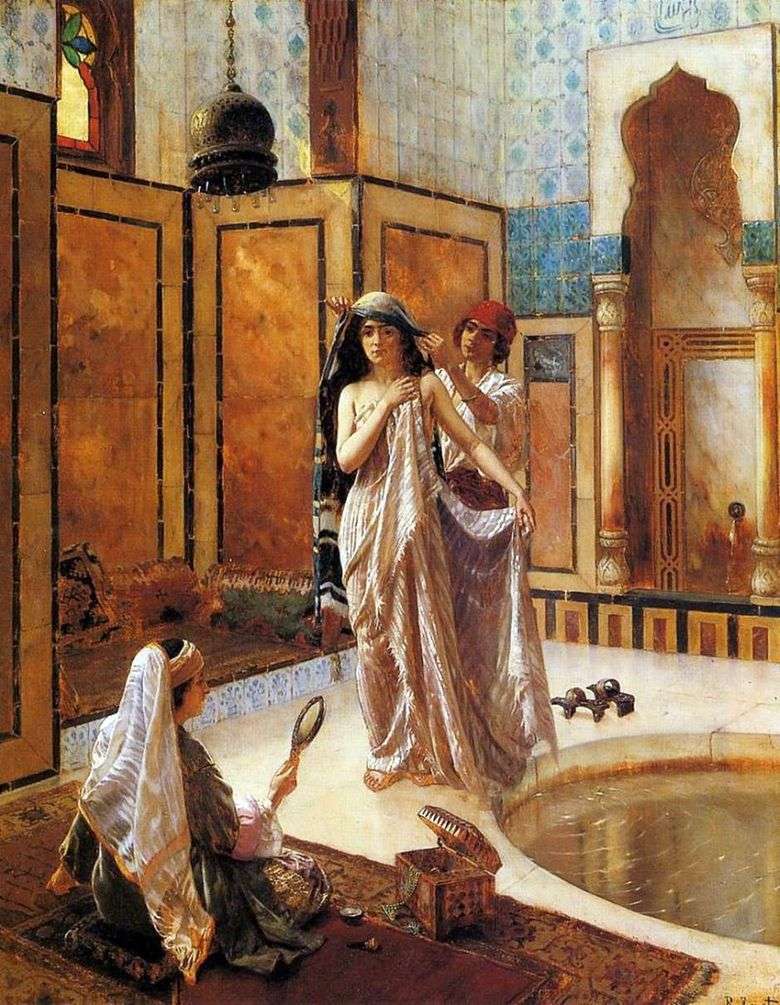 Baño en el harem – Rudolf Ernst Peierls
Baño en el harem – Rudolf Ernst Peierls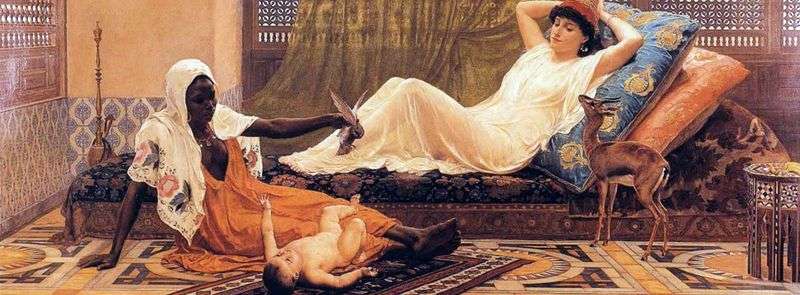 New star of the harem by Frederick Goodall
New star of the harem by Frederick Goodall Emperor Rudolph II by Hans von Aachen
Emperor Rudolph II by Hans von Aachen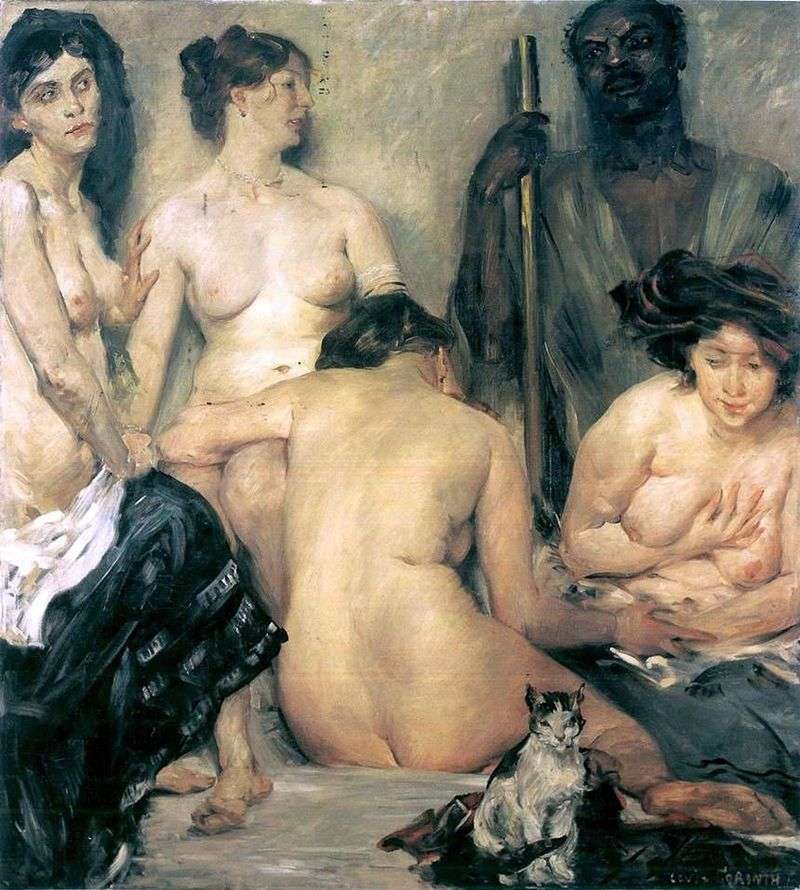 Harem by Lovis Corinth
Harem by Lovis Corinth